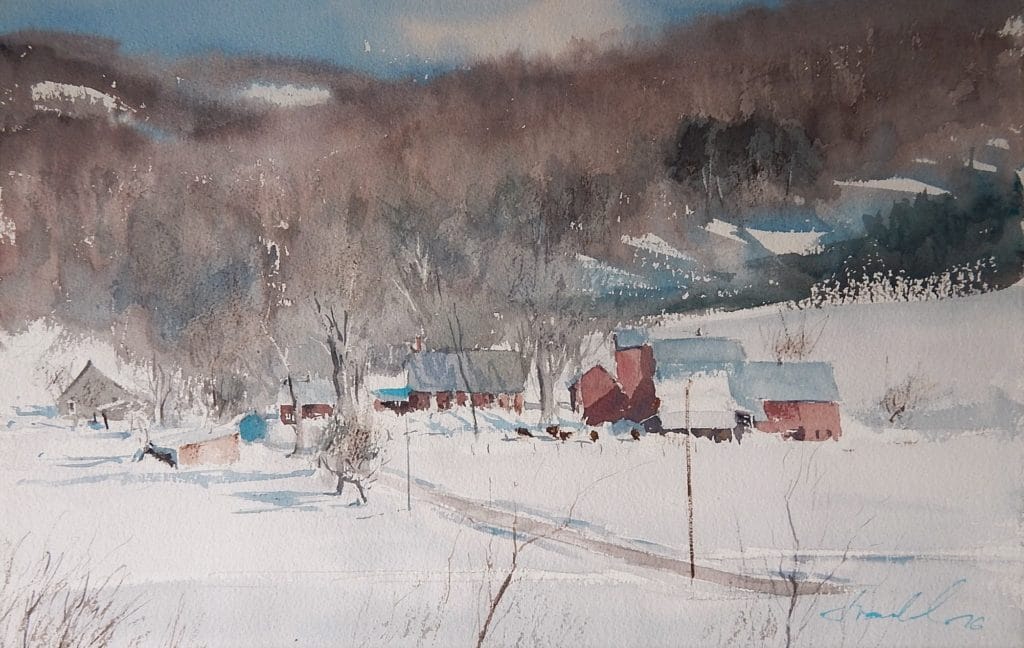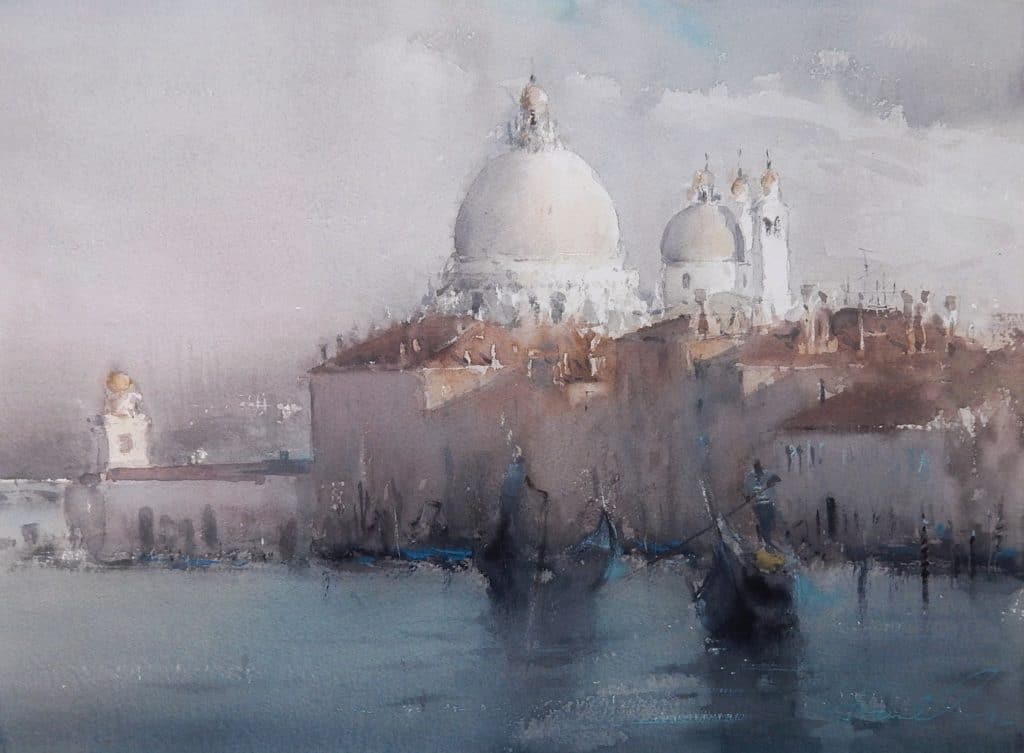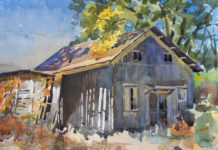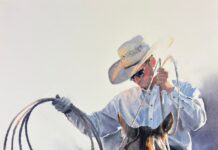When California artist Frank Eber switched from gouache to watercolor about 15 years ago, he wanted to develop a style of plein air painting that emphasized the immediacy, freshness, energy, and suggestive power of the transparent medium. “It seemed pointless and contrary to the best qualities of the medium to slavishly copy what was in front of me,” he explains. “Anyone can paint meticulous representations from life or photographs. I was more interested in the challenge of capturing the energy and spirit of all that surrounded me. Watercolor seemed perfect for that form of expression because it lends itself to combining observations and emotions.”

In Eber’s experience, that combination is best achieved when artists work in a deliberate and economical manner, “Two hours is the absolute maximum amount of time I spend on a half-sheet watercolor outdoors, and ideally I can complete the piece in 60 to 90 minutes,” he says. “After two hours, the pattern of light and shadow has changed completely so I wind up working from memory; and once the subject has been defined, the extra painting time can lead to dulling the colors and adding too much information. If I felt the need to elaborate on the details or wait until the paper was completely dry, it would be better to go back to the same location another day at the same time.”

Composing With Lines and Shapes
But Eber is not completely spontaneous when it comes to handling watercolors outdoors, and he does make pencil drawings on his watercolor paper to establish the placement and scale of the shapes. “I will spend anywhere from 10 to 20 minutes drawing the subject on a sheet of rough watercolor paper,” he says. “I never worry about erasing my pencil lines. I think they’re very much part of watercolor painting and I think it’s actually nice to see them in the finished piece.”

While the plan Eber draws indicates the positive shapes to be painted, he is just as concerned about the negative shapes that can add balance, connection, and restfulness to a painting. “Often, what I don’t paint is more important than what I do paint,” he says. “It’s a bit like composing a piece of music. The quiet pauses can be as expressive as the sounds. Likewise, the pace of the movement from boldly gestured marks to small details is the rhythm of the painting.”
Based in Central California, Frank Eber is an award-winning plein air artist and sought-after instructor and juror.
This article was excerpted from an interview by M. Stephen Doherty in the Dec 16/Jan 17 issue of PleinAir Magazine.
For more inspiring stories like this one, sign up for our free weekly e-newsletter.








